The sweet potato has an extraordinary survival, adaptability, and transformation record. It began in Central and South America. The first cultures grew it there. Over the centuries, it spread to other continents.
Early explorers and traders carried it to new cultures. These cultures welcomed it for farming and cooking.
When the sweet potato arrived in the Southern United States, it quickly became popular.In addition it thrived in the warm, tropical climate of the area.
In Georgia, farmers grew it for its nutrition and strength. Soon, it became a key part of local diets. It acquired its popularity through a slow, incremental development, sustained through migration, trading, and agricultural advances.
Even today, sweet potato is booming in Georgia, and its contribution to the state’s agricultural economy and culinary heritage is tremendous.
To learn about its journey, our blog takes a tour through its history and growing processes.
The journey of a root across two continents clearly testifies to both nature’s adaptability and human intelligence.

Step 1: The Origins in Central and South America
The sweet potatoes enjoyed today have a Central and South America origin in the tropical regions of both countries.
Such incredible plants, belong to Convolvulaceae, a group of flowers that include morning glories.
Unlike Irish potatoes, which grow from stems, sweet potatoes develop as true roots that extend deep into the earth. Farmers have harvested sweet potatoes for over a thousand years.
Native communities have relied on them as a staple food. They are important in many cultures, including Mexico, Peru, and Ecuador. People enjoy their sweet, tasty flesh and their nutritional value.
I still remember when I first tasted a roasted sweet potato during my journey—the rich, earthy sweetness carried a whiff of heritage in every bite. Sweet potatoes grow in warm temperatures
. They have an amazing journey from their native tropical areas to other parts of the world. Sweet potato owes its widespread distribution to early sailors and merchantmen, who facilitated its establishment in many regions of the planet.
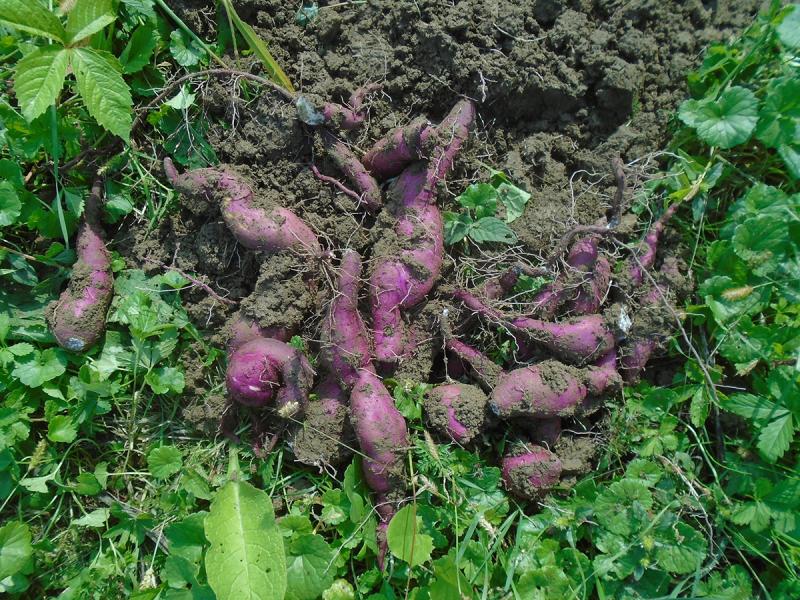
Step 2: The Journey to North America
The journey of sweet potatoes to North America involved a long and winding path. It started with early migration of humans, when humans moved plants over lands. Over a period of time, trading routes facilitated dispersal of such a beneficial crop.
Spanish explorers in the 15th century, however, played a crucial role in transporting sweet potatoes across continents.
Initially, it reached Europe, and subsequently, it spread even further to Asia and Africa, eventually becoming a global food staple.
When European immigrants arrived in North America, with them, they exported the sweet potato to new regions.
It was, however, the Native Americans who actually honed its growing techniques to perfection.
Centuries afterward, the sweet potato grew remarkably well in southeastern America, thriving in its warm temperature and sandy soils.
Today, the root veggie is a staple in Southern cuisine, closely associated with migration and agricultural heritage.
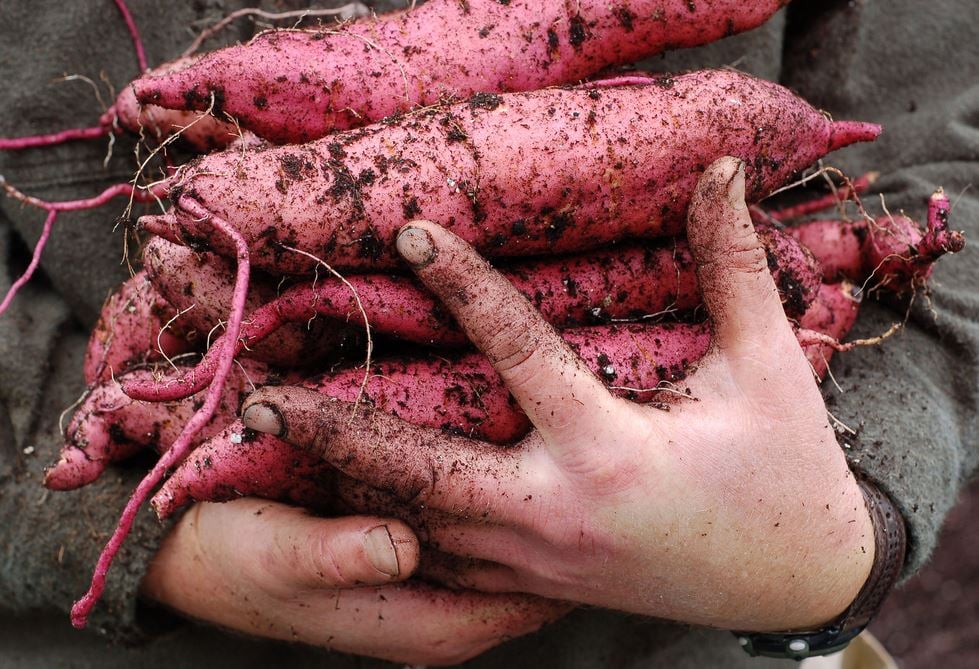
Step 3: Establishing Sweet Potatoes in Georgia
In Georgia, the journey of sweet potatoes hasn’t always been easy. While the state is now a major producer, it has faced its fair share of setbacks over the years.
One of the biggest challenges came in the early 20th century when the sweet potato weevil (Cylas formicarius) devastated crops, making it difficult for farmers to maintain production.
As they struggled to control the pest, sweet potato farming declined.
However, in recent years, Georgia has reclaimed its status as a key state for growing sweet potatoes .Today, more than 5,000 acres of land are dedicated to farming sweet potatoes in Georgia.
Farmers have adapted to new challenges by using advanced pest management techniques to combat the sweet potato weevil
. They also practice crop rotation methods, which help maintain soil health and reduce pest issues. Thanks to these efforts, Georgia has regained its position as a major producer of sweet potatoes in the U.S.
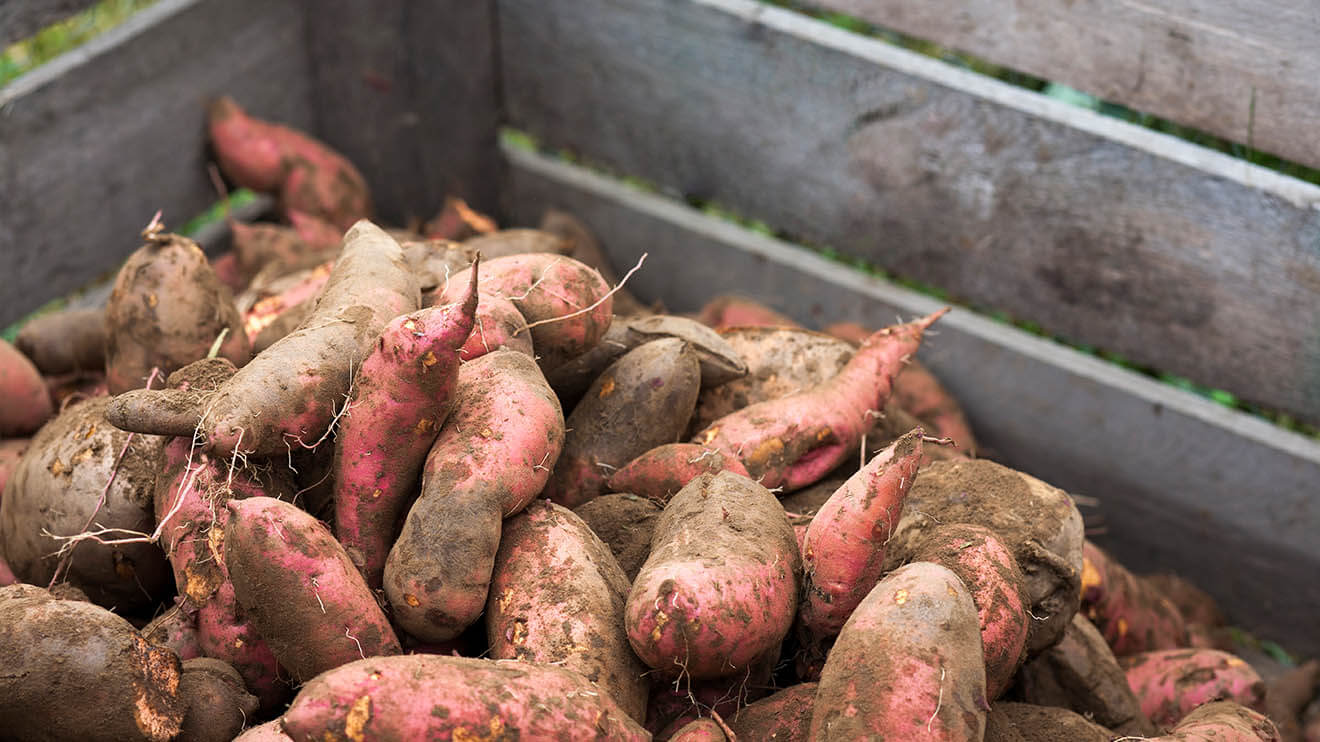
Step 4: Cultivation and Varieties in Georgia
The cultivation of sweet potatoes in Georgia is a time-honored tradition, refined over generations. The process involves growing sprouted slips—young plants carefully nurtured from a seed potato. This method of propagation helps ensure that the crop stays strong and disease-resistant.
Once the slips are ready, farmers transplant them into the fields, where they grow into fully developed sweet potatoes. In Georgia, the most commonly grown variety is Covington, which accounts for over 80% of the state’s production.
This variety is favored for its sweet flavor, smooth texture, and dependable yield. Other notable varieties include Beauregard, known for its deep orange flesh, and
Evangeline, which has an even richer sweetness. Farmers also grow Murasaki, a purple-skinned type, and O’Henry, a white-fleshed variety with a mild, nutty taste.
Georgia farmers use careful planting methods and choose the best varieties. This helps them have a strong and healthy harvest every year.
From sprouted slips to fully grown sweet potatoes, the entire process is a well-managed cycle that supports both local markets and large-scale distribution.
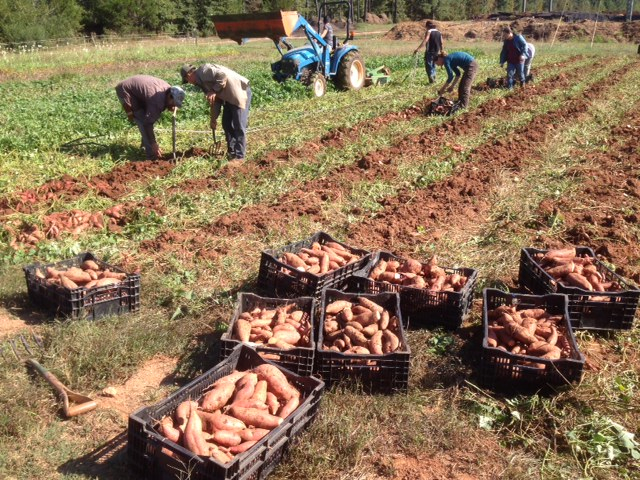
Step 5: Harvesting and Storage
Growing sweet potatoes requires patience, as they take about 90-110 days to fully mature. When the leaves begin to turn yellow, it signals that the crop is ready for harvest.
Farmers carefully dig up the roots, making sure they remain intact and undamaged.
In the U.S., sweet potatoes are graded for quality, with the No. 1 grade being the standard. Around 65-75% of the harvested crop meets this high standard, making it ideal for sale.
After harvest, the next crucial step is the curing process, which plays a key role in developing the rich flavor sweet potatoes are known for.
This involves placing them in a warm environment at 80-85°F with high humidity for about a week. During this time, small cuts heal, and starches gradually convert into sugars, enhancing their natural sweetness.
Once cured, sweet potatoes must be properly stored at 55-60°F to stay fresh for several months. Without the right conditions, they can spoil quickly. Farmers and suppliers use strict methods to keep the crop in great condition.
This helps preserve its flavor and nutrition long after harvest.
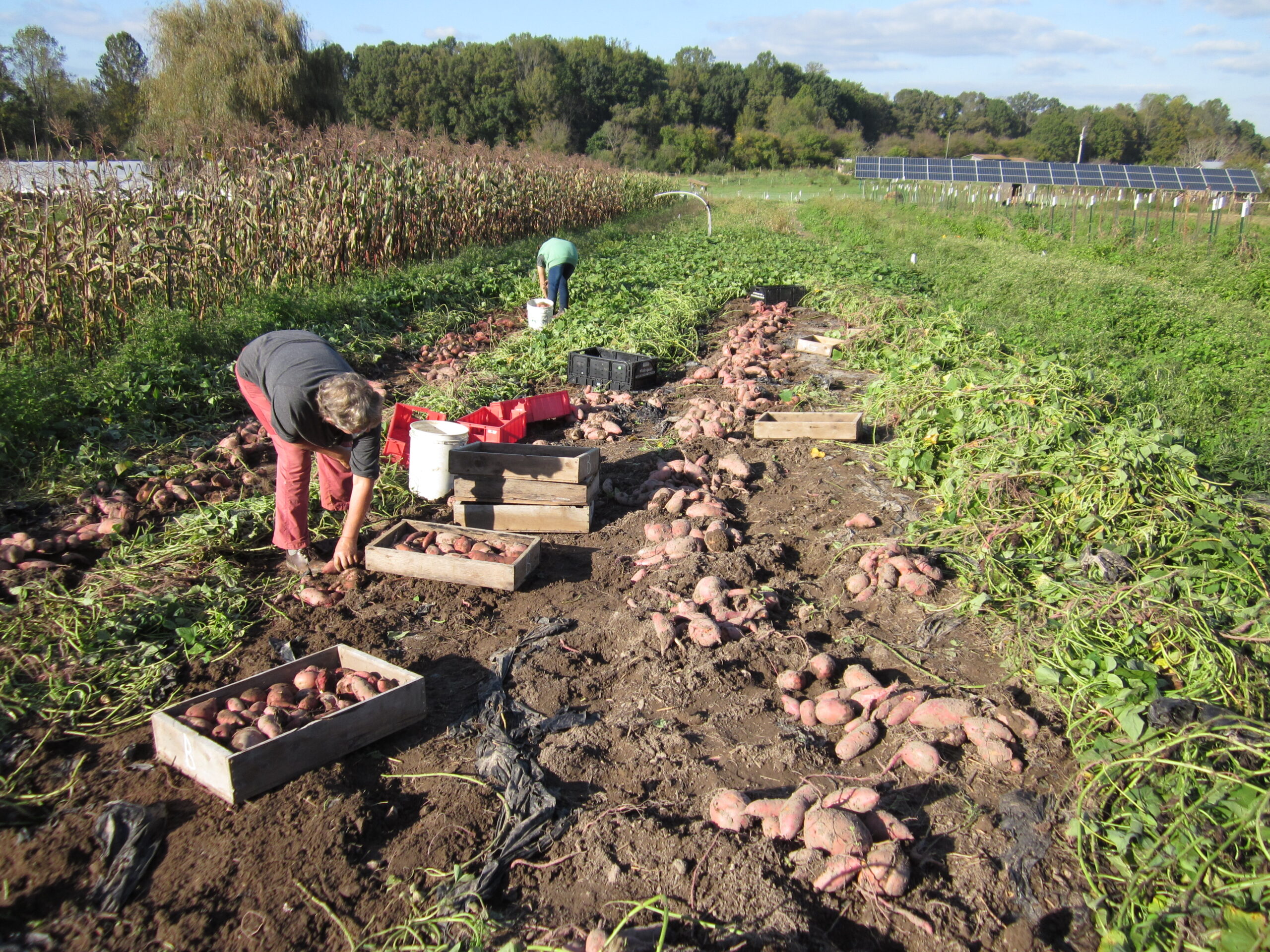
Step 6: The Cultural and Economic Impact
1. Sweet Potatoes: A Symbol of Georgia’s Agricultural History
In Georgia, the story of sweet potatoes is about more than just food—it’s a vital part of the state’s agricultural history.
One remarkable figure in this history is John Madison Strickland, a dedicated farmer from Roswell who helped make sweet potatoes a valuable crop in the region.
2. John Madison Strickland: A Farming Pioneer
During the boll weevil crisis, which devastated cotton farms, he made the bold decision to switch to sweet potatoes.
His success not only sustained his family but also provided support to his neighbors during difficult times. His dedication to the crop earned him the nickname “SweetPotatoJohnny.”
3. Overcoming the Boll Weevil Crisis
As the demand for sweet potatoes grew, they became a common item in local markets. They even started to be exported nationally. While North Carolina led U.S. production, Georgia saw steady growth as well.
4. Supporting the Community During Hard Times
Farmers embraced sustainable farming practices to ensure that sweet potatoes continued to thrive for future generations. Today, the legacy of hard work, family traditions, and resilience lives on, proving how this humble root vegetable became a lifeline for Georgia’s farming community.
5. Growing Demand and National Expansion
In Georgia, the story of sweet potatoes is about more than just food—it’s a vital part of the state’s agricultural history. One remarkable figure in this history is John Madison Strickland, a dedicated farmer from Roswell who helped make sweet potatoes a valuable crop in the region.
6. Georgia’s Place in U.S. Sweet Potato Production
During the boll weevil crisis, which devastated cotton farms, he made the bold decision to switch to sweet potatoes. His success not only sustained his family but also provided support to his neighbors during difficult times. His dedication to the crop earned him the nickname “SweetPotatoJohnny.”
7. The Role of Sustainable Farming
As the demand for sweet potatoes grew, they became a common item in local markets. They even started to be exported nationally. While North Carolina led U.S. production, Georgia saw steady growth as well.
8. A Legacy of Resilience and Tradition
Farmers embraced sustainable farming practices to ensure that sweet potatoes continued to thrive for future generations. Today, the legacy of hard work, family traditions, and resilience lives on, proving how this humble root vegetable became a lifeline for Georgia’s farming community.
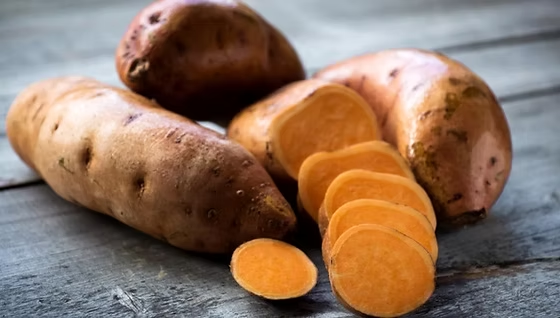
Step 7: The Versatility of Sweet Potatoes
As a child in the Southern states, I loved visiting farmers’ markets. I enjoyed looking for the freshest sweet potatoes. In Georgia, these markets are brimming with variety, from the deep red-skinned NC-122 to the creamy O. Henry. Each type has its own unique flavor profile, making sweet potatoes a staple in both traditional and modern recipes.
During my last visit to Clough Specialty Farms in North Carolina, I saw how hard farmers work. They are dedicated to providing high-quality sweet potatoes to buyers in the area.
They take great pride in growing produce packed with fiber, vitamin A, and antioxidants, offering plenty of health benefits. Whether baked or roasted, these Southern comfort food staples can also be transformed into unexpected delights—like doughnuts.
One of my favorite places to experience these creative dishes is Yeehaw in Saxapahaw, NC. They take the humble sweet potato and elevate it, blending flavors in ways I never imagined. No matter how they’re prepared, these versatile tubers remain a cherished part of Georgia’s rich culinary scene.
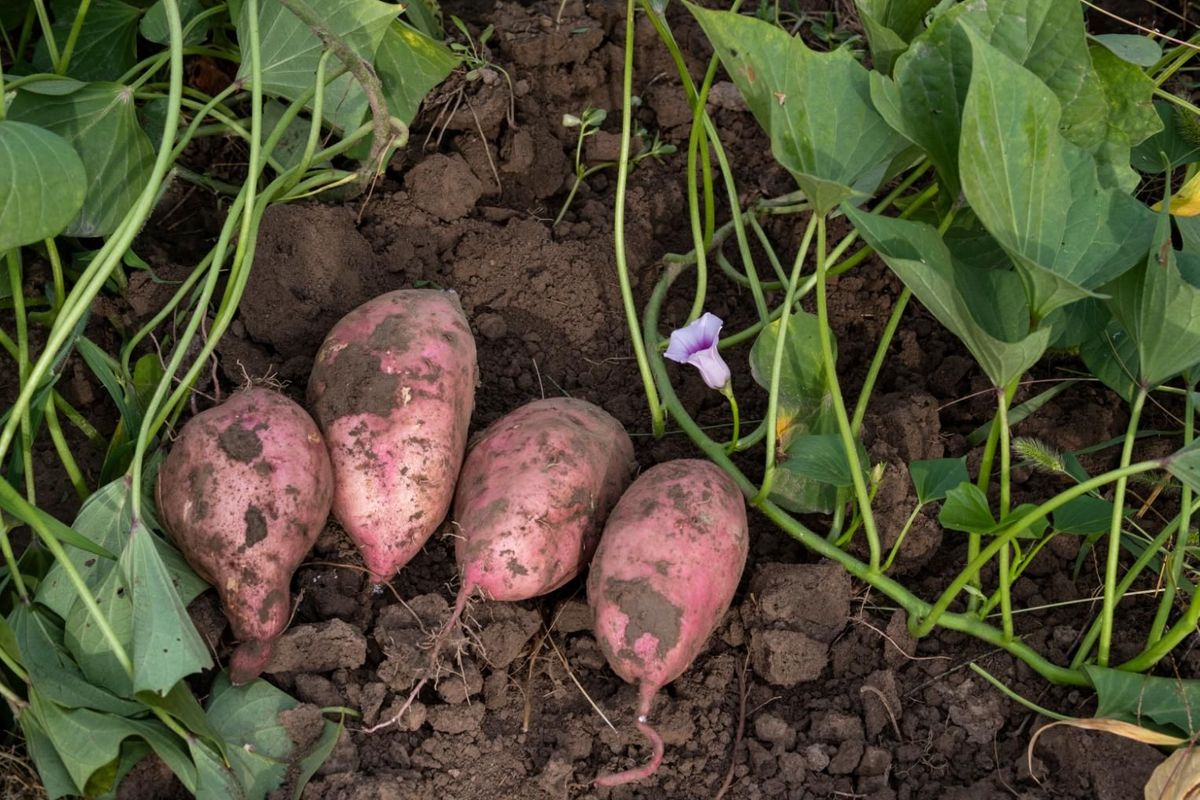
A Sweet Journey through Time
The sweet potato has an incredible past that stretches far beyond the kitchens of Southern families in Georgia. This important food, known for its strength and ability to grow in different places, began in South America.
Ancient cultures grew it for food. Over time, it traveled across continents, overcoming challenges and proving its strength. Today, it is still a big part of the culture and history of the American South. People there still value its rich origins.
What makes this crop even more remarkable is how it has stood the test of time. Farmers in Georgia still cultivate this beloved root, ensuring it remains a vital part of everyday meals.
Whether baked, mashed, or fried, the sweet potato has earned its place on countless plates, offering both comfort and tradition. Its simple nature holds a strong legacy. This legacy deserves to be celebrated for its journey from the past to now.

